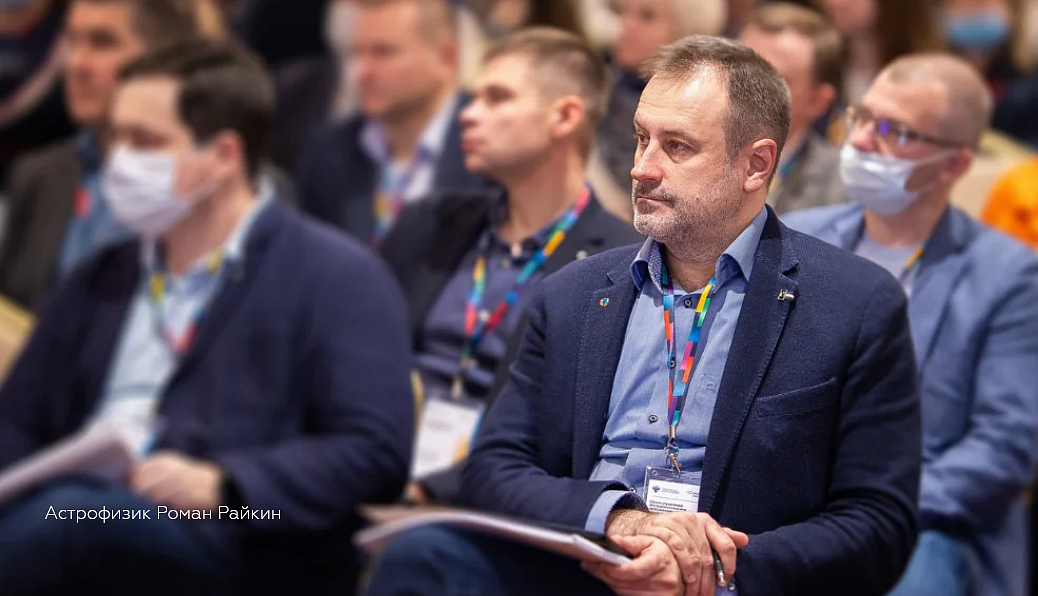IA Amitel: astrophysicists from Altai State University investigate ultrafast particles in space
 Why is it necessary to spend billions of rubles to study the Universe, and is there intelligent life on other planets? The scientist also told whether our planet is threatened by a collision with an asteroid, why black holes are dangerous and why he would never fly into space.
Why is it necessary to spend billions of rubles to study the Universe, and is there intelligent life on other planets? The scientist also told whether our planet is threatened by a collision with an asteroid, why black holes are dangerous and why he would never fly into space.
Astronomy and astrophysics are one of the most popular scientific fields in the world today. Popular science materials about black holes, distant galaxies, cosmological concepts remain on the front pages of traditional and Internet media. Inventions that were only written about in science fiction books a few years ago have already become available in everyday life. The loudest discovery of recent years is the detection of gravitational waves from the merger of distant massive objects (black holes and neutron stars). Over the past 25 years, astrophysicists have been discovering thousands of exoplanets - planets in other star systems, some of which could potentially harbor life.
"A scientist is a person who satisfies his curiosity at the expense of the state"
– When we talk about space and Altai Krai, we immediately remember cosmonaut German Titov. From the outside, it seems that we are still living on his legacy and no success in the field of astronautics and astrophysics have occurred in the region during this time. Is it true?
– In addition to the fact that Altai is the birthplace of very talented, courageous, and heroic people who left their mark, including in the exploration of near-Earth space, we have strong scientific schools in our region that deal with astrophysics as a science.
It should be noted that the territory of Altai is interesting for scientists due to its good astroclimate. It is no coincidence that we, in Zmeinogorsk district, have built a powerful center for optical observations of artificial earth satellites - the German Titov Altai Optical and Laser Center. For observations in the optical range, the purity and transparency of the atmosphere, the absence of clouds, and anthropogenic illumination are very important. In Altai - both in Altai Krai and in the Altai Republic - there are areas with unique, one of the best in Russia and even in the world, astroclimatic conditions. By the way, as part of the TAIGA observatory development project, in recent years we have been studying the astroclimatic conditions of the regions of the Greater Altai in order to find the best place to build a new full-scale mega-science observatory. According to our data obtained as a result of processing information from space instruments, one of the best sites for the implementation of the project is a specific area in the Altai Mountains. In addition to the characteristics of the atmosphere, altitude plays an important role for gamma-ray astronomy, and here the mountain plateaus of Altai are ideal. We really hope that our joint project with our colleagues will receive support within the framework of the federal program for the construction of megascience installations in Russia.
- How much money do you need to build this facility?
– Unfortunately, a lot. At least several billion rubles. But such an installation on the territory of Russia will make it possible to obtain new breakthrough results in the field of gamma astronomy, astrophysics of cosmic rays and related fields - atmospheric physics, geophysics, as well as to develop engineering and design areas and even new industries aimed at creating unique scientific equipment, particle detectors, telecommunication systems. These areas are much faster than fundamental science find a way into applied areas. In addition, such a research center would make it possible to train top-class specialists in the field of electronics, mathematical modeling and programming, big data analysis, machine learning and artificial intelligence in Siberia. And today this is a national task of the highest priority level.
– Your center is also engaged in weather forecasting. Is Altai Krai threatened by global warming?
- Let's start with the fact that climate and weather are completely different things. The Center, based on operational data from space monitoring, generates short-term forecasts of dangerous hydrometeorological phenomena: strong winds, heavy precipitation, abnormally hot weather. This data is used by territorial authorities to make decisions to prevent possible damage to the economy of the region and danger to people's lives in case of emergency. As far as climate research is concerned, it is now well known that global climate change is indeed taking place, and in Siberia and the Arctic the rate of increase in average temperature is much higher than the global average. One of the scientific topics of the Center is regional climate modeling. Using the supercomputer resources of our partner, the Institute of Computational Technologies, as well as space monitoring data, the Center's specialists calculate scenarios for the region's climate dynamics. Unfortunately, accurate assessments in this area are impossible, just as it is difficult to predict specific consequences for the impact on ecosystems and the economy. However, in general, it is clear that rapid climate change brings many negative aspects, and the efforts of the world community to mitigate global warming by reducing greenhouse gas emissions are scientifically based.